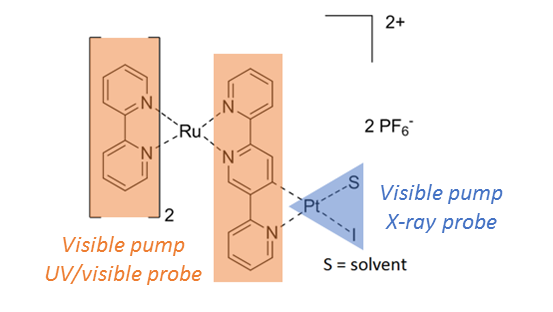- Qing Pan - former member
- Annemarie Huijser - supervisor / former member, nowadays member of the Photocatalytic Synthesis group
Light absorption by a Ru/Pt bimetallic molecular photocatalyst as shown in Figure 1 leads to the formation of singlet 1MLCT Metal to Ligand Charge Transfer states, which are converted into corresponding 3MLCT triplet states within 100 fs. The unique absorption allow to monitor subsequent internal conversion between the individual ligands, which depending on the structure of the ligands can occur either towards or away from the catalytic site and with time scales ranging from ~0.5 ps - 30 ps. From visible pump - UV/visible probe can however not be concluded at which time scale the catalytic site becomes reduced. As this process is crucial for the final hydrogen formation step, we probe reduction of the catalytic Pt site in real-time using ultrafast x-ray absorption spectroscopy. For this specific photocatalyst, we succeeded to detect photoreduction of the Pt site occurring at a time scale of about 100 ps.

Figure 1. Representation of which excited state localizations are probed using ultrafast optical (orange) and x-ray absorption spectroscopy (blue).
